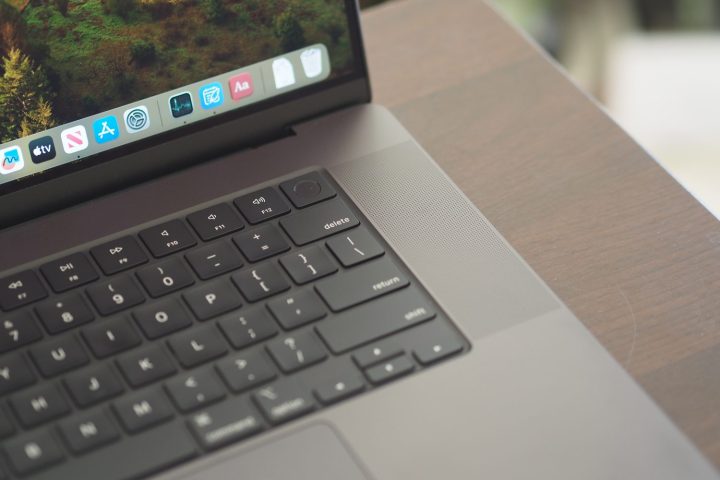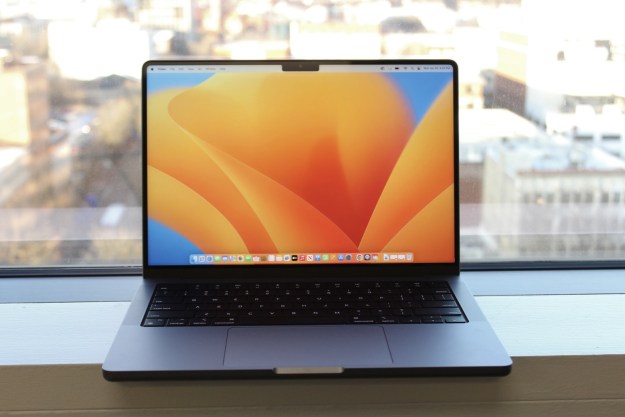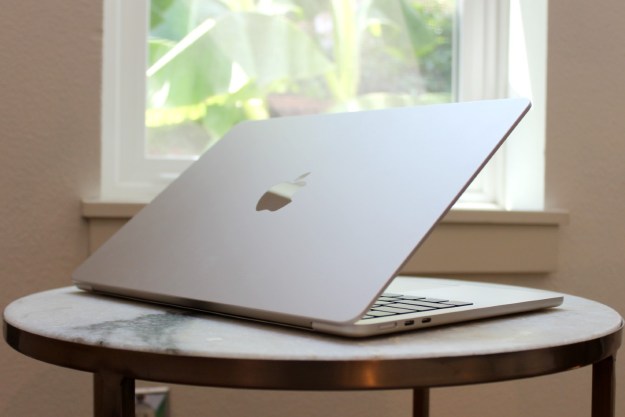
A few weeks ago, I decided to migrate to all-Apple computing. It’s been a fascinating journey and certainly not a straight line, with several unanticipated twists. Perhaps the biggest is an about-face when it comes to my main PC.
I had fully intended to replace my workhorse Windows desktop with Apple’s most powerful, yet accessible desktop, the Mac Studio. That seemed entirely logical: a desktop PC should replace a desktop PC. As it turns out, however, Apple’s MacBook Pro 16 better fits my needs. The reason why involves a lot of personal decision-making that hopefully you’ll be able to relate to as you map out your own computing needs.
The M3 Max made me wonder

I started heading in a new direction after I completed my Mac Studio review and was writing a comparison with the latest MacBook Pro. I really liked the Mac Studio, appreciating its meticulous design, quality build, and fast, yet quiet performance. I had made up my mind. But as I compared the numbers, I noticed that the M3 Max in the MacBook Pro 14 was almost as fast overall as the M2 Ultra in my Mac Studio, and it was faster in certain GPU-intensive applications.
Simply put, the M2 Ultra is very fast. It fuses together two M2 Max chipsets, offering 24 CPU cores to go with either 60 or 76 GPU cores. It applies brute force processing to churn through demanding tasks. The M3 lineup introduces a new architecture, though, including a new 3nm node and faster, more efficient CPU performance. But the real story is in the GPU upgrades, with technologies like Dynamic Caching, hardware ray tracing, and mesh shading promising significantly faster graphics performance.
I got my hands on a MacBook Pro 16 with a 16-core CPU/40-core GPU M3 Max and ran our suite of benchmarks. The story became even clearer: the M3 Max provides better single-core and GPU performance, and the M2 Ultra is faster in multicore applications thanks to having so many cores. Both are faster than I need today.
| Apple Mac Studio (M2 Ultra 24/60) |
Apple MacBook Pro 16 (M3 Max 16/40) |
|
| Handbrake (seconds) |
53 | 55 |
| Cinebench R24 Single (higher is better) |
120 | 140 |
| Cinebench R24 Multi (higher is better) |
1,870 | 1,667 |
| Cinebench R24 GPU (higher is better |
7,727 | 13,146 |
| Pugetbench Premiere Pro (higher is better) |
978 | 885 |
And once again, I’m left at a bit of a stalemate between these two options. Choosing between them wouldn’t be as simple as looking at performance data. I’d need to really stop and consider how I use my variety of devices in order to get to the best solution.
Identifying my needs

In taking a good, hard look at my computing habits, I started to map out some of the core scenarios I find myself in each day or week. I recommend that you do the same — you might surprise yourself. I know I did.
The first scenario is my role as a laptop reviewer. I use each review machine to conduct its review, which includes benchmark testing, research, and writing the review copy. Depending on the laptop, battery testing can take two or three days, meaning that a review laptop is often unavailable.
I also perform a variety of personal tasks involving the kind of information that I really don’t want on review
My “aha!” moment was when I tried out the Magic Keyboard for the iPad Pro.
The third scenario includes several projects outside of technology writing. I have a novel I’m working on, a nonfiction book idea I’m tossing around, and I’m experimenting with disparate computing topics like video editing and large language modules (LLMs). I also don’t generally do this work on review
Finally, I have leisure tasks, including casual games like chess and crossword puzzles, and the usual random things like looking something up while watching TV, triaging email, managing reminders, etc.
My “aha!” moment was when I realized that since I purchased a Magic Keyboard for my iPad Pro 11, I’ve been using it more and more. In fact, entire days can go by where I work exclusively on the iPad. Once I added a physical keyboard, the iPad suddenly became an essential computer, if not quite a “real” one. In a sense, it had replaced a lot of what I did on my M1 Pro MacBook Pro 14, which I purchased in 2022 for a lot more of my mobile computing than I would have guessed. As it turns out, that fact alone ended up being an important deciding factor.
The problem of ports

Once I identified my core scenarios, I matched them with my computing equipment, and that’s when it really became clear what my solution was going to be. I’d already decided to put my Windows desktop into standby mode, leaving me with my MacBook Pro 14 and my iPad.
I’ve mentioned that the M2 Ultra Mac Studio and the M3 Max MacBook Pro are both overkill for my current needs. Theoretically, that means I could use the MacBook Pro 14 as my mostly stationary “desktop” that doesn’t leave my home office all that much. It provides plenty of power, at least for now, and on those occasions when my iPad doesn’t suffice, I could disconnect the MacBook and use it as a laptop.
There was just one problem. The M1 Pro (as with all of the Pro variants) only supports two external displays. I have three 27-inch 4K monitors on my desk, and when I need them, I really like to have them. To support all three, I’d need a Max, which supports up to four external displays on the MacBook Pro and five on the Mac Studio, or an Ultra, which supports up to eight.
So, the M1 Pro MacBook Pro was out, which takes me back once again to the question of the Mac Studio and the M3 Max MacBook Pro. Having done the work of analyzing my own computing habits, tendencies, and needs, it started to become clear which would be the better option for me.
The final answer
The Mac Studio has some advantages over the MacBook Pro 16. The first is that it’s less expensive as a refurb than a new MacBook in my chosen configuration. That’s mitigated, though, as I would be selling the MacBook Pro 14 for enough to make up the difference.
The second is noise. The Mac Studio remains almost entirely silent, no matter how hard it’s working. When I fire up Balder’s Gate 3 on the MacBook Pro 16, one of the few AAA games I’ve been playing, its fans spin up, and it’s quite loud. It’s not enough to sway my decision, but it’s a noticeable difference.
The third is convenience. With the MacBook Pro 16, I need to disconnect a few cables whenever I need a “real” mobile PC. I’m using a Thunderbolt 3 dock that supplies an Ethernet port and a couple of display connections, making things simpler. But the Mac Studio/MacBook Pro 14 combo would be less fussy.
The M3 Max MacBook Pro offers everything I need for the full desktop experience.
But if I’m being honest, in actually playing these scenarios out in real life, I found that a simpler setup of just two machines works better than three. The iPad has surprised me with how much I enjoy using it out of the office, and the M3 Max MacBook Pro really does offer everything I need for the full desktop experience. That’s not to mention the fact that going with the latest MacBook Pro feels like a smarter long-term investment while also gaining a better mobile machine when I really need it.
But as you can see, the decision wasn’t a simple one. I can imagine many people will choose the MacBook Pro over the Mac Studio simply do to the fact that they can take their demanding work on the go. That’s legitimate too — and I think ultimately, it calls into question Apple’s more powerful desktop options. They have their place, but for most people, the MacBook Pros are almost as powerful without sacrificing the convenience of mobility. Sometimes it just requires taking an honest look at your own needs to discover that.
Editors' Recommendations
- These 6 tweaks take MacBooks from great to nearly perfect
- If you buy one MacBook Air alternative, make it this one
- I was wrong about using Stage Manager on Mac
- I’m worried about the MacBook’s next big rival
- The case for buying the M2 MacBook Air over the M3 model


